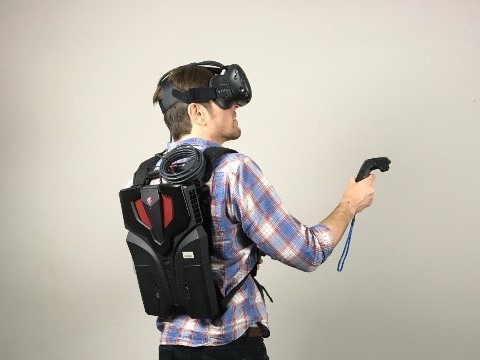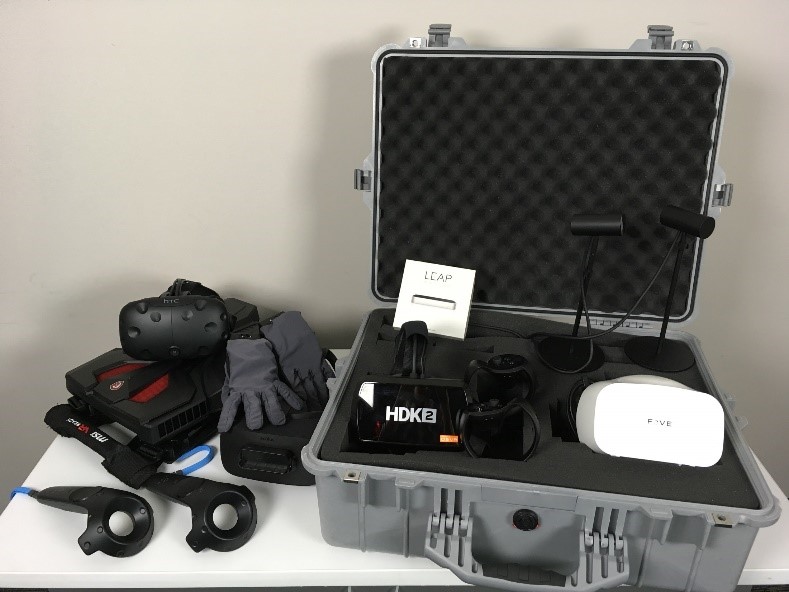
The Situation
The military’s shift towards mixed reality, virtual reality, and augmented reality (MR/VR/AR) training in recent years has yielded safer training at a lower cost than live operations and a more immersive experience than traditional, two-dimensional displays and partial dome environments.
“Although the benefits of these virtual environments are clear, supporting natural human interactions is still challenging,” said Dr. Michael Jenkins, Senior Scientist at Charles River. “During live training, trainees develop learned muscle memory for critical physical tasks. We must support natural interactions so they can develop that same muscle memory in virtual environments.”
The Charles River Analytics Solution
The Virtual Interface for Real-Time User Control during Simulated Operations (VIRTUOSO) is an augmented and virtual reality (collectively XR) software development kit (SDK), designed to enable more rapid and consistent development of XR-based simulations, without the prerequisite of becoming an XR expert. The VIRTUOSO SDK provides a hardware-agnostic XR development architecture and a suite of XR development tools and libraries, currently tailored for Unity3D development, to enable rapid prototyping of immersive XR experiences and advanced XR interactions (e.g., flexible haptic, gesture, and speech control libraries), with a focus on supporting natural human interactions within a virtual environment to foster more realistic virtual simulations and training.
The resultant solution is an SDK that can expedite XR content and experience development, while minimizing risk associated with novel XR solutions development by encoding XR best practices and providing off-the-shelf software components that solve some of the hardest challenges XR developers will face.

Untethered VR training using the VIRTUOSO natural control platform toolkit
The Benefit
While the VIRTUOSO toolkit can be applied to any virtual environment simulation, it will initially improve military medical training and education by advancing medical simulation systems, such as those that address combat casualty training. It can automatically assess skill performance and integrates hierarchical models of the abilities and techniques that contribute to overall skill proficiency, allowing users to conduct self-guided training and receive individualized performance feedback to drive improvement. At the same time, expert trainers have the ability to remotely observe these training sessions to provide additional guidance to trainees based on their real-time training performance. Because VIRTUOSO gracefully incorporates so many leading commercial control and display peripherals, it can support training with the equipment best suited to a training task, or support training with the equipment available to an individual when they wish to train. This training robustness means simulations that incorporate the VIRTUOSO framework are resilient to future technology advances. For example, under the upcoming Phase II effort, the team will be leveraging connections with leading MR/VR/AR industry companies so VIRTUOSO simulations can support the most cutting-edge haptic feedback devices the day they are released to market.

The VIRTUOSO toolkit for simulation developers improves military medical (and non-medical) training and education.
Related Articles
Read more about VIRTUOSO in this post by TMST Consultants.
This material is based upon work supported by the U.S. Army Research Laboratory Human Research Engineering Directorate (HRED) – Advanced Training and Simulation Division (ATSD) and the Army Contracting Command (ACC)-Aberdeen Proving Ground (APG)-Research Triangle Park Division (ACC-APG-RTP), Orlando Branch under Contract No. W911NF-16-C-0011. Any opinions, findings and conclusions or recommendations expressed in this material are those of the author(s) and do not necessarily reflect the views of the ATSD.
